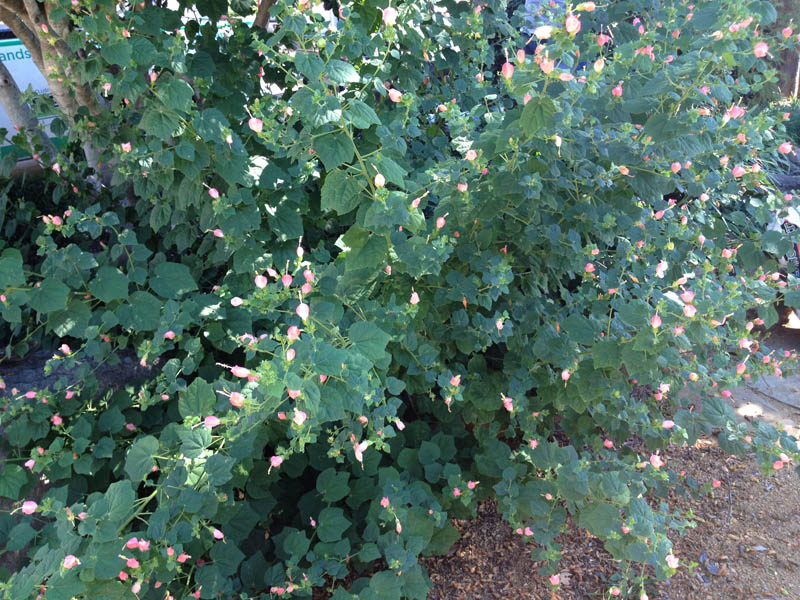Turk’s Cap
Turk's Cap, malvaviscus, most versatile Texas native, this shrubby perennial sports unique whorled flowers that provide nectar to hummingbirds and certain species of butterflies.

Growing
Turk’s cap can be grown in full sun to full shade. Plants in full sun locations can sometimes develop fungal issues on the leaves, but tend to bloom heavier. Turk’s cap tolerates many soil conditions. Plants that establish in heavy, clay soils can be difficult to transplant. It is drought tolerant once established.
In southern parts of Texas, plants are evergreen; plants in northern parts of the state typically drop their leaves in winter. Plants are root hardy in most of the state. After the first hard freeze, plants can be cut down to the ground. Otherwise, pruning or deadheading is not required.
Tips
Use Turk’s cap in shaded locations where you need to fill in large areas, as it will quickly grow and spread.
Recommended
M. drummondii forms a large, upright clump with tall stems and mallow-like, light green leaves. It usually blooms summer through fall; however, it can bloom year-round in warmer parts of the state. There are newer cultivars available. ‘Fiesta’ has variegated foliage with yellow and white splotched leaves and is a Texas Superstar® plant. ‘Pam Puryear’ sports soft pink flowers.
Features: mallow-like foliage; bright red or white, whorled flowers; small berries; fast growing
Height: 3–6'; up to 9'
Spread: 3–5'
Hardiness: zones 7–11
Note: Turk’s cap is naturally found growing in a variety of different habitats, from sandy streambeds to heavy clay soils in wooded areas.


